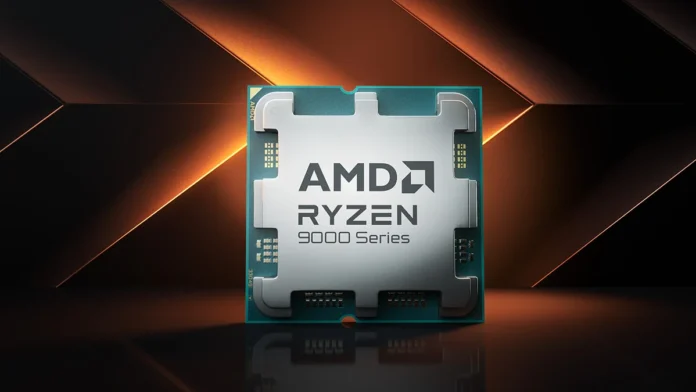Let’s be honest, the tech world loves a good underdog story. And right now, AMD is playing that role to perfection, nipping at the heels of the seemingly untouchable Nvidia in the graphics card and processor market. But can they really challenge Nvidia’s dominance? That’s the million-dollar question – or maybe the billion-dollar one, considering the stakes.
I initially thought this was a simple case of performance metrics and market share. But then I realized it’s so much more complex than that. We’re talking about ecosystems, developer relationships, and even the subtle art of brand perception. So, let’s dive deep, shall we? We’ll analyze the strategies, the strengths, and the potential pitfalls that AMD faces in its quest to dethrone the king.
The Current Landscape | Nvidia’s Stronghold

Nvidia has been the undisputed leader in the high-end GPU market for years. They’ve built a powerful brand synonymous with cutting-edge technology, particularly in gaming and professional visualization. Think about it – when someone says “gaming PC,” chances are, the first image that pops into your head is an Nvidia GeForce card. Their market dominance is built on several pillars:
- Technological Prowess: Nvidia consistently pushes the boundaries of GPU technology, releasing innovative architectures and features.
- Ecosystem Lock-in: Their CUDA platform has become the industry standard for GPU-accelerated computing, creating a strong incentive for developers to stick with Nvidia.
- Brand Recognition: Years of marketing and consistent performance have cemented Nvidia’s position as the top choice for gamers and professionals alike.
It’s a formidable position, no doubt. But as any good military strategist knows, even the most well-defended fortress has its weaknesses.
AMD’s Arsenal | Innovation and Value Proposition
Here’s the thing about AMD: they don’t back down. They’ve consistently challenged Intel in the CPU market, and now they’re setting their sights on Nvidia’s GPU throne. Their strategy hinges on two key elements: innovation and a strong value proposition. Learn more about tech industry shifts here .
- RDNA Architecture: AMD’s RDNA architecture is designed to deliver impressive performance per watt, making their cards more efficient and cost-effective.
- FidelityFX Super Resolution (FSR): This is AMD’s answer to Nvidia’s DLSS (Deep Learning Super Sampling). FSR allows for upscaling images to improve performance without sacrificing too much visual quality, and it’s open-source, which is a big plus for developers.
- Competitive Pricing: AMD often offers comparable performance to Nvidia at a lower price point, making their products attractive to budget-conscious gamers and professionals.
What fascinates me is their approach to open standards. While Nvidia has CUDA, which, let’s be honest, locks developers in, AMD is pushing for more open and accessible technologies. This could be a game-changer in the long run, attracting developers who value flexibility and interoperability. According to their official website , they are heavily investing in these technologies to ensure they remain competitive.
The Road Ahead | Challenges and Opportunities for AMD
But, and this is a big but, AMD faces some significant challenges. Here are a few:
- Ecosystem Adoption: CUDA is deeply entrenched in many professional workflows. AMD needs to convince developers to invest time and resources in optimizing their software for AMD GPUs.
- Supply Chain Constraints: The global chip shortage has impacted both AMD and Nvidia, but AMD has sometimes struggled to meet demand for its products. This can frustrate customers and push them towards Nvidia.
- Brand Perception (Still): Despite significant improvements in recent years, some consumers still perceive AMD as the “budget” option. Overcoming this perception will require consistent performance and effective marketing.
However, there are also significant opportunities for AMD to capitalize on:
- The Rise of AI: The demand for AI and machine learning is exploding, and this is an area where AMD can compete directly with Nvidia. Their GPUs are well-suited for these workloads, and they’re actively developing software and tools to support AI development.
- Gaming Consoles: AMD powers both the PlayStation 5 and Xbox Series X/S consoles, giving them a significant foothold in the gaming market. This exposure can help boost their brand recognition and drive adoption of their technologies.
- Cloud Gaming: As cloud gaming becomes more popular, AMD can partner with cloud providers to offer competitive GPU solutions.
Let me rephrase that for clarity: the gaming market , especially cloud gaming, is a huge potential growth area for AMD if they play their cards right.
The Verdict | Can AMD Dethrone Nvidia?
Here’s the thing: dethroning Nvidia completely is a tall order. Nvidia has a massive head start and a powerful ecosystem. However, AMD can significantly challenge Nvidia’s dominance and carve out a larger share of the GPU market. Learn about legal battles in the tech world here . Their success will depend on their ability to continue innovating, execute their strategy effectively, and address the challenges they face. I initially thought the competition was a foregone conclusion, but then I considered how resilient AMD has been in the CPU market. And now, I’m seeing that same grit and determination in their GPU efforts. It will not be a walk in the park, and they will need to continue to put out great products. And continue to get mindshare from the public. Their future potential is great.
It’s not just about raw performance numbers; it’s about the overall value proposition, the ecosystem, and the perception of the brand. If AMD can continue to deliver competitive performance at a more attractive price point, and if they can build a strong ecosystem around their technologies, they have a real chance to disrupt the market. The graphics card market is evolving at rapid speeds, and AMD is positioned to compete.
And what’s fascinating is that this competition benefits everyone. It forces both AMD and Nvidia to innovate and offer better products at more competitive prices. So, whether you’re a gamer, a professional, or just someone who appreciates cutting-edge technology, this battle for GPU supremacy is something to watch closely.
FAQ Section
Frequently Asked Questions
Will AMD GPUs always be cheaper than Nvidia?
Not necessarily. While AMD often offers a better price-to-performance ratio, the actual pricing depends on various factors, including supply, demand, and specific features.
Is FidelityFX Super Resolution (FSR) as good as Nvidia’s DLSS?
FSR and DLSS both aim to improve performance through upscaling, but they use different techniques. DLSS often provides better image quality in some scenarios, while FSR has the advantage of being open-source and compatible with a wider range of GPUs.
Does AMD offer a CPU/GPU ecosystem similar to Intel/Nvidia?
Yes, AMD offers CPUs and GPUs that can work together seamlessly. While not as deeply integrated as some Intel/Nvidia solutions, AMD’s components are designed to complement each other.
What is CUDA, and why is it important?
CUDA is Nvidia’s parallel computing platform and API that allows developers to use Nvidia GPUs for general-purpose computing. It’s widely used in fields like AI, scientific research, and video editing.
Are AMD GPUs suitable for professional workloads like video editing and 3D rendering?
Yes, AMD GPUs can be used for professional workloads. Their performance is often comparable to Nvidia’s, and they offer competitive features and tools.
Are the AMD drivers reliable?
AMD has improved significantly. They have been working to improve the drivers and the reliability. It used to be an issue but no longer is.

